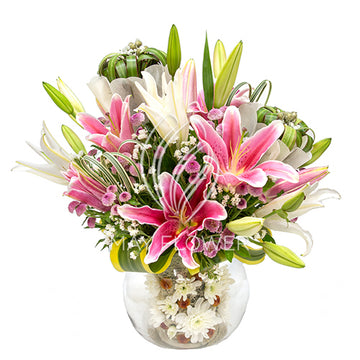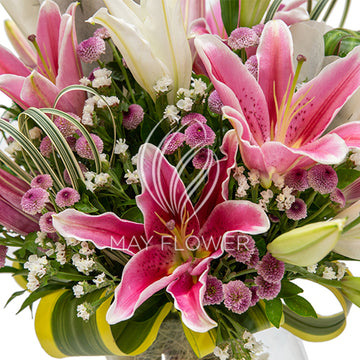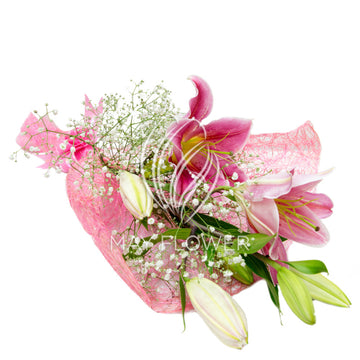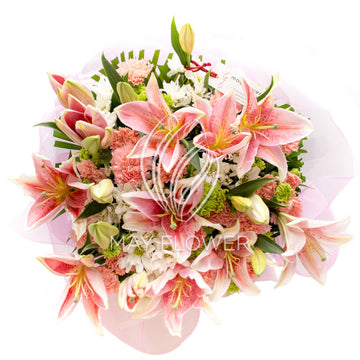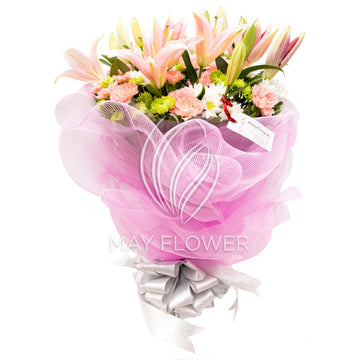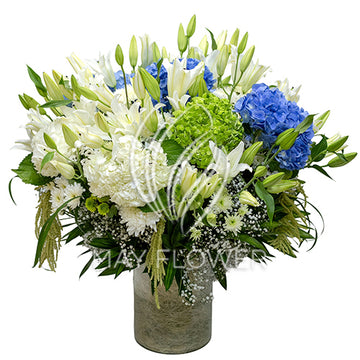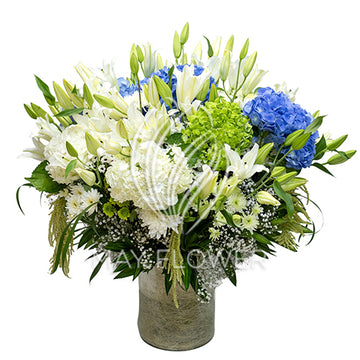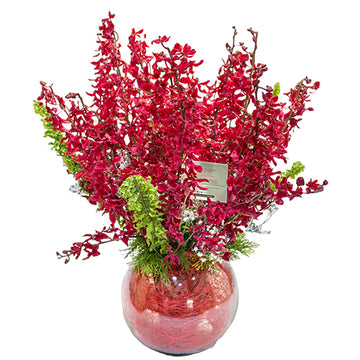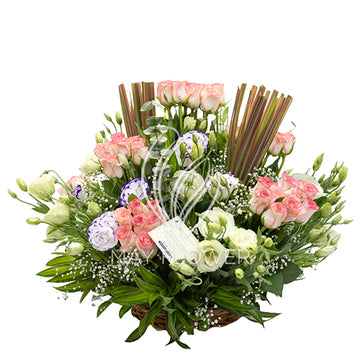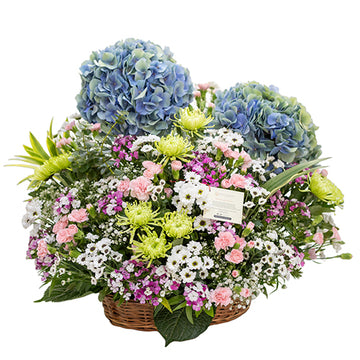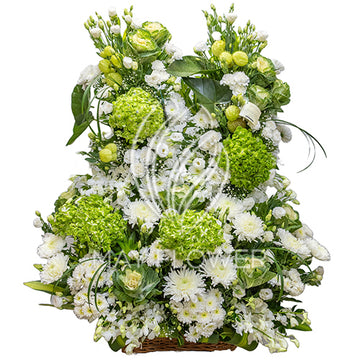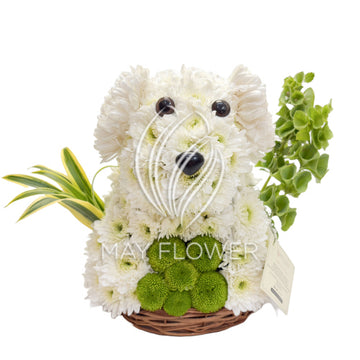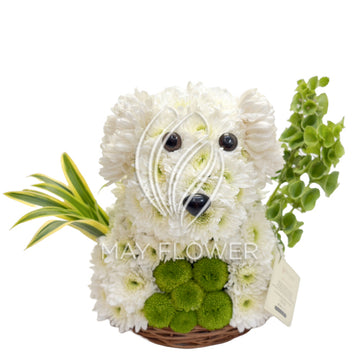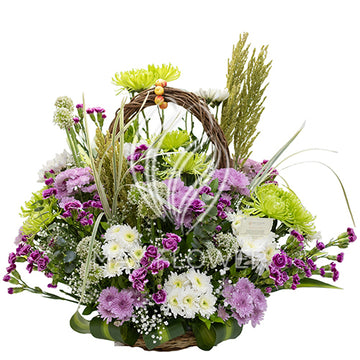Valentines Flowers
Valentines Flowers
Heart is the most common shape and look for a Valentines, and even candles, candies, cookies, cakes, figurines, stuffed images, etc. The heart is a symbol both of love and also vulnerability.
When you send someone a Valentine, you take a risk of being rejected and your feelings hurt. So a piercing arrow is a symbol of death and the vulnerability of love. On the other hand, the heart and arrow also symbolize the merging of the male and female as one.
In the 12th century, physicians believed that the heart was the seat of love and affection in the human body. But the actual biologicial shape of the human heart does not look like the heart as we see it today. Why? Well, some people are guessing (and it is funny!) that the Valentine heart-shape as we know it today was done by a doodler to represent the human female buttocks or a female torso with well-endowed breasts or the imprint of lips (wearing lipstick) made upon a piece of paper. Once again, it’s all on how you want to spin the story! 🙂
Wearing Your Heart on Your Sleeve?
This expression comes from early 1800’s where young American and British men wore slips of paper pinned to their sleeves with their girlfriend’s name written on. They did this for several days (why and when I have no clue) and so it started the expression “wearing one’s heart on one’s sleeve.”
Today the American Heart Association in the US has a “Save a Sweet Heart” anti-smoking campaign during Valentine’s Week to help educate school kids against smoking.
Lovebirds
As I mentioned above, it was believed that birds chose their mates on February 14. And so the dove was chosen to be the bird representative because it was sacred to the Roman Goddess Venus because it chose a lifelong mate. They also make a cooing sound, which further proved they were the love couple. The dove was also a sacred bird to the Goddess, Venus (and other Love Deities). And Noah had considered the dove to be his messanger. In the Song of Solomon, the word “Turtle” is really referring to the “turtledove.” The turtledove is common in Asia and Europe, but it is not found in N. America at all. Since all doves are part of the pigeon family, they mate for life, and the male and female both share in the caring of their young. Their bcooing sounds are often considered “love sounds” and today it is often said that when people in love talk rather sugary and baby-like it is “cooing” with each other.
Dove superstitions are that they were magical and were often used to divine the future. The heart of a dove was often an ingredient in love potions. If you saw a white dove fly overhead it was suppose to be good luck. If you dreamt of a dove it was a sign that you had a promise of happiness. And, if you saw the first dove in Springtime, made a wish, that wish would come true (much like wishing upon a falling star.)
But during the years, love birds have changed from Doves to hummingbirds to birds of paradises. Today, love birds depcited on Valentines are tiny parrots brilliant in color because genetically they really are in the parrot family. They often act like young lovers also. How? They are known for living in pairs and keeping to themselves, much like young lovers want their privacy today. As pets they are considered loveable, easy to tame and respond to affection. Some can even be taught to speak.
The bad side of lovebirds is that they can carry a disease harmful to humans. And so, there are strict rules regarding importing them into the United States.
Valentine Cards
The custom of exchanging love notes goes back to the Roman Lupercalia festival with the names being drawn. But the British were the ones who popularized sending your feelings to someone via a printed card. The first Valentine card was created by Chrles, Duke of Orleans, imprisoned in the tower of London for several years following the Battle of Agincourt in 1415. he sent Valentine poems to his wife in France from his jail cell. Commercial Valentines didn’t apepar until 1800 (In England) and although handmade cards had been around for years. Inthe 19th century a new kind of Valentine emerged called “penny dreadfuls” that were insulting and cruel rather than loving and flattering. They were mostly sent anonymously too.
In America, hand-made Valentines appeared around 1740 and were sealed with red wax and left secretly on a lover’s doorstep (or sent in the mail). Commercial cards for the most part took over around 1880’s. But people still (and will always) make homemade ones too. Some included trinkets, some locks of hair and in some cases there were checks that were drawn against “The Bank of Love” and valentines printed to look like money. One was so realistic to a 5 pound note it was quickly recalled!
Valentine verses were romantic, whimsical and critical. As I mentioned above, postage was expensive. And during the English Victorian times the custom was that the recipient paid for the mail they got (not the sender as we do it today). So you can imagine what a double insult it was to pay for a Valentine only to open it up and discover it is critical aka “Vinegar Valentine.”
Walter Crane and Kate Greenaway were famous children’s book illustrators of their time. At the age of 22, Kate sold her first Valentine design for $15. Within weeks, over 25,000 copies were sold. For a few years after, she kept designing Valentines, but was never paid a penny more. Today, Kate Greenaway Valentine’s are considered collectable items, as well as those designed by Walter Crane.
When Valentine Cards got to America, they also got more creative. The first known to come to the US is a note written by John Winthrop in 1629 to his wife before leaving England for the New World. It ended with “My sweet wife, Thou must be my valentine for none hat challenged me.” He later became governor of Massachusetts Bay Colony.
Valentines were not only done in delicate pen and ink, but also watercolor and the handwriting also became a thing of beauty for the card as well, as good penmanship was considered a form of art, as well as the quality of a person.
Roses
Flowers were considered love tokens before there even was a St. Valentines. The Roman God, Bacchus (God of Wine and Joy) and Venus (Goddes of Love and Beauty) both considered the beauty and fragrance of flowers to be tied with romance and love. But since the time of Solomon, the primary flower linked to romance was always the rose. Cleopatra of Egypt covered the floor with roses before receiving Mark Anthony.
A Roman myth is that Cupid was carrying a vase of sweet nectar to the gods on Mt. Olympus and spilled it on the ground. From that spot of spilled nectar, roses grew!
But if roses are so symbolic of romance and love, then why the thorns? Well, another story goes like this:
The soft west wind named Sephyr one day opened a lovely rose and Cupid bent over to kiss the elegant petals. When he did, he ws stung by an irate bee hiding inside. Venus got so angry she told Cupid to shoot some bees and string them up on one of his arrows. She then planted this string of dead bees on the rose stems, and the stings became the rose’s thorns and ever since roses had thorns.
The ancient Romans also believed that anything discussed under a rose (I mean how low can you go to talk?) was considered sub rosa and to be kept secret. Today the Latin term is still used today to express something that is to be kept confidential.
Another Roman theory is that the Rose reminded the Roman Catholic Church of watching Christians devoured by lions. Later on, the Virgin Mary was called “The Rose of Heaven.”
Daisies, Violets and Bachelor Buttons
There are a few other flowers considered to be romantic also.
The Romans believed that the daisy was once a wood nymph. One day, while dancing in a field she was seen by Vertumnus, the God of Spring (who fell in love with her of course). But when he reached for her she got frightened. So, out of pity the other gods let her sink into the earth and she became a daisy.
I do not know how the game of holding a daisy and plucking off it’s petals saying “He loves me” or “He loves me not” got started.
As far as Violets go….one day it is said that Venus got jealous of a group of beautiful maidens. And when Cpid refused to say that his mother’s beauty was better than theirs, Venus go furious, so she beat her rivals (these maidens) until they were blue and she watched them shrink into violets.
In the Science of Botany, the cornflower is known as Kyanus, named after a Greek youth who was born in a field one day, making garlands of the blue blossoms for the altar of Flora, Goddess of Flowers. He died, unfortnately, leaving some of the garlands undone and so this touched Flora’s heart and so in his honor she named the flowers after him.
Say It With Flowers…
This is most commonly known slogan today.
But what to say and with what flower?
Here are some traditional meanings for some other flowers often sent for Valentine’s Day or other touching moments:
Bleeding Heart
Hopeless, but not heartless.
Gardenia
I love you secretly.
Gladiolus
You pierce my heart.
Lily-of-the-Valley
Let us make up.
Rose
I love you passionately.
Sweet William
You are gallant, suave and perfect.
Violet
I return your love.
Green
Green leaves represented hope in a love affair. (Often rumored to be the reason why British girls sprinkled bay leaves with rose water and put them on their pillows on Valentine’s Day Eve. They wanted to see their loved one in their dreams.)
Valentine’s Day Expense
According to the CBS Morning News (2/10/13), only 59.8% will celebrate Valentines Day this year spending an average of $130.97.
And, how will they do it? $18.6 will be spent on cards and gifts. With $10 billion spent for someone close. $3 billion spent on friends and other acquaintances. And, $5.6 billion on pets!
51% buy cards
36.6% buy flowers
19.7% buy jewelry
(Note: This doesn’t count for those who get 2 or all 3 of the above also.)
Where do most of us shop for our Valentine’s Day items?
39.6% will shop at a discount store
26.3 % will shop on-line
To order flowers online, visit Mayflower.in
